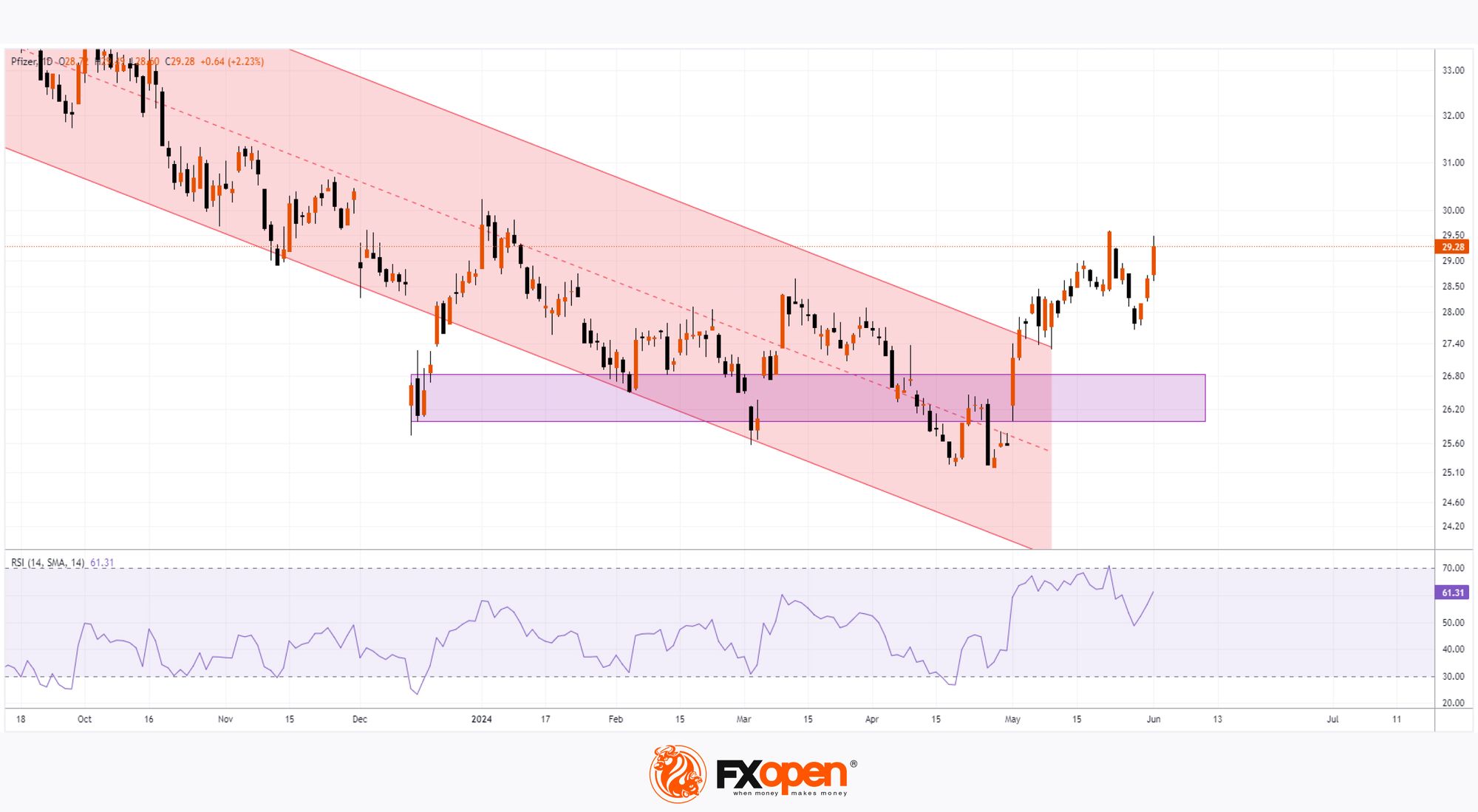FXOpen

Yesterday, the price of Pfizer's stock rose by more than 2.2%, while the S&P 500 index remained almost unchanged from the opening to the closing of trading. This fact is noteworthy, considering that for many months the price of PFE stock performed worse than the market - if the S&P 500 grew by 23% during 2023, then the price of PFE decreased by approximately 43%.
The decline in 2023 (shown by the red channel) was disappointing. But what about now - is the situation changing? Are investors missing out on something important by turning away from PFE?
Several factors indicate that PFE stock may have optimistic prospects.
Fundamentally - Investors Place has included PFE in the list of the most undervalued stocks for reasons such as:
→ 2023 saw a record number of FDA approvals. New drugs could boost sales.
→ Pfizer acquired Seagen, significantly expanding its capabilities in cancer research. This supports the company's strategy to become a world-class leader in oncology.
→ By 2030, Pfizer plans to release 8 drugs that could become "blockbusters."

From a technical analysis perspective of the daily chart of PFE:
→ Attention is drawn to the 3 candles from December 13-15, 2023 - on each of these days, over 100 million shares were traded on the NYSE, which is unusually high for this market. Large investors may have been building long positions - as the price of PFE rose out of the zone marked by the 3 candles in purple.
→ Throughout 2024, the price attempted to drop below the indicated zone, but each time it did not make progress.
→ The decline on April 25 looks like a Final Shakeout pattern in Richard Wyckoff's terminology, indicating the completion of the stock accumulation process.
The price action in May 2024 looks extremely bullish:
→ PFE stock is outperforming the market.
→ The RSI indicator remains above the level of 50.
→ The downtrend has been broken.
According to TipRanks, the average forecasted price of PFE stock by Wall Street analysts is $33.15 (+13.10% from current levels).
Buy and sell stocks of the world's biggest publicly-listed companies with CFDs on FXOpen’s trading platform. Open your FXOpen account now or learn more about trading share CFDs with FXOpen.
This article represents the opinion of the Companies operating under the FXOpen brand only. It is not to be construed as an offer, solicitation, or recommendation with respect to products and services provided by the Companies operating under the FXOpen brand, nor is it to be considered financial advice.
Stay ahead of the market!
Subscribe now to our mailing list and receive the latest market news and insights delivered directly to your inbox.








